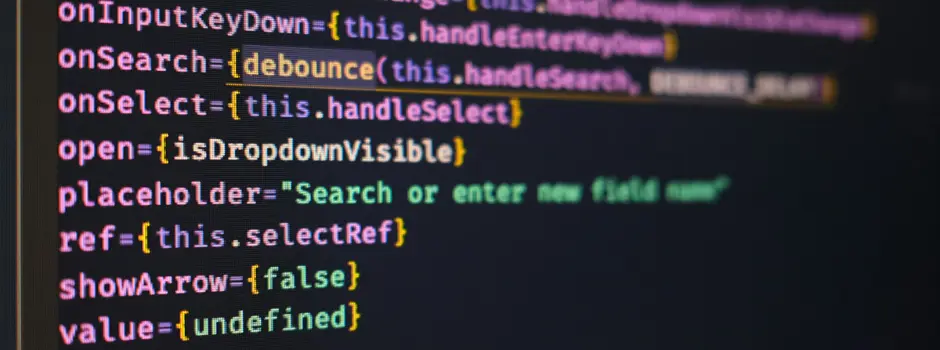
Complete Guide to this Keyword in JavaScript
Dec 31, 2024 4 Min Read 1925 Views
(Last Updated)
The this keyword is a fundamental aspect of JavaScript that is often misunderstood by developers, especially beginners.
It is a special reference variable that plays a crucial role in determining the context in which a function is called.
In this comprehensive guide, we will explore the various contexts in which this keyword is used and how it can be effectively utilized in your JavaScript projects.
Table of contents
- What is this keyword in JavaScript?
- The different contexts in which the 'this' keyword is used
- The Global Context
- The Function Context
- The Constructor Context
- Arrow Functions and this
- Changing the Context with call(), apply(), and bind()
- Best Practices for Using the 'this' Keyword in JavaScript
- Common Mistakes to Avoid
- Advanced Techniques with this keyword
- Wrapping Up...
- FAQs
- What is this keyword in JavaScript?
- Does this keyword refer to the same thing in all contexts?
- How does this keyword work in arrow functions?
- What is a callback in JS?
What is this keyword in JavaScript?
The this keyword in JavaScript is a reference variable that is automatically assigned a value when a function is called.
It refers to the object that is executing the current piece of JavaScript code. The value of this is not determined by how or where a function is declared, but by how it is called – the call-site.
This dynamic nature of this keyword can lead to confusion, but with a clear understanding, it becomes a powerful tool.
Must Read: Master JavaScript Frontend Roadmap: From Novice to Expert
Before we move to the next section, make sure that you are strong in the full-stack development basics. If not, consider enrolling for a professionally certified online full-stack web development course by a recognized institution that can also offer you an industry-grade certificate that boosts your resume.
The different contexts in which the ‘this’ keyword is used
As discussed above, the dynamic nature of ‘this’ can be pretty confusing, especially for beginners as the value of ‘this’ can change depending on the context. So let’s discuss how you can use it based on different contexts:
1. The Global Context
When the ‘this’ keyword is used outside of any function or object, it refers to the global object. In a browser environment, the global object is the window object. However, it’s important to note that using this in the global context can lead to hard-to-debug issues, especially when dealing with strict modes or modules, where this is undefined.
console.log(this); // Outputs: Window {...} (or the global object in a non-browser environment)Also Read: Arrays in JavaScript: A Comprehensive Guide
2. The Function Context
The value of this inside a function depends on how the function is called. When a function is called directly, without any specific context, this keyword refers to the global object.
function myFunction() {
console.log(this);
}
myFunction(); // Outputs: Window {...} (or the global object in a non-browser environment)However, the value of this changes when a function is invoked as a method of an object. In this case, this refers to the object itself.
let myObject = {
myMethod: function() {
console.log(this);
}
};
myObject.myMethod(); // Outputs: {myMethod: ƒ}Read More: Functions in JavaScript: Important Things To Know
3. The Constructor Context
When a function is invoked with the new keyword, it is called a constructor function. In this context, this keyword inside the function refers to the newly created object.
function MyConstructor() {
this.myProperty = "Hello World, this is GUVI";
}
let myInstance = new MyConstructor();
console.log(myInstance.myProperty); // Outputs: "Hello World, this is GUVI"In the above example, this keyword inside the MyConstructor function refers to the myInstance object.
Must Read: Variables and Data Types in JavaScript: A Complete Guide
4. Arrow Functions and this
Arrow functions handle this differently compared to regular functions. They do not create their execution context but instead inherit this from the enclosing context. This is known as lexical scoping.
let myObject = {
myMethod: function() {
let arrowFunction = () => console.log(this);
arrowFunction();
}
};
myObject.myMethod(); // Outputs: {myMethod: ƒ}In this example, even though arrowFunction is a function, this keyword inside it refers to myObject because it inherits ‘this’ from the parent function.
Must Explore: Java vs JavaScript: Top 3 Comparisons
5. Changing the Context with call(), apply(), and bind()
JavaScript provides three methods – call(), apply(), and bind() – that allow you to explicitly set the value of ‘this’ in a function. These methods are useful when you want to control the context in which a function is called.
The call() and apply() Methods
The call() and apply() methods allow you to call a function with a given this value and arguments. The difference between the two is that call() accepts an argument list, while apply() accepts a single array of arguments.
function myFunction() {
console.log(this);
}
let myObject = {};
myFunction.call(myObject); // Outputs: {}
myFunction.apply(myObject); // Outputs: {}In the above examples, we are using call() and apply() to set this inside myFunction to myObject.
Also Explore: Constructors in JavaScript: 6 Uses Every Top Programmer Must Know
The bind() Method
The bind() method returns a new function where this has a certain value. It allows you to create a function with a permanently bound this value, which can be useful in certain scenarios.
function myFunction() {
console.log(this);
}
let myObject = {};
let boundFunction = myFunction.bind(myObject);
boundFunction(); // Outputs: {}In the above example, we use bind() to create a new function boundFunction where this is set to myObject. When we call boundFunction, it outputs myObject as the value of this.
Also Read: Top 10 JavaScript IDEs and Code Editors You Should Know
Best Practices for Using the ‘this‘ Keyword in JavaScript
When working with the this keyword in JavaScript, it’s important to follow some best practices to avoid confusion and potential bugs:
- Use explicit binding with call(), apply(), or bind() when you need to control the context in which a function is called.
- Be aware of the default binding of this in different contexts, such as the global scope or function scope.
- Use arrow functions when you want to maintain the lexical scope of this.
- Avoid using this keyword in the global scope, as it can lead to unexpected behavior.
- Use strict mode to catch potential errors related to this being undefined in certain contexts.
Common Mistakes to Avoid
When working with this keyword, it’s easy to make mistakes that can result in unexpected behavior. Here are some common mistakes to avoid:
- Forgetting to use the new keyword when invoking a constructor function.
- Confusing the context of this in nested functions or callback functions.
- Using arrow functions when you need the dynamic binding of this.
- Using call() or apply() without providing the correct arguments.
- Assuming that this always refers to the object that a function is defined in.
Start Developing: 30 Best JavaScript Project Ideas For You [3 Bonus Portfolio Projects]
Advanced Techniques with this keyword
The ‘this’ keyword in JavaScript can be leveraged in advanced techniques to achieve more complex functionality. Here are a few examples:
- Method chaining: By returning this at the end of a method, you can chain multiple method calls together.
- Currying: Using bind(), you can create a new function with some arguments pre-set, which can be useful for partial function application.
- Event handling: The this keyword can be used in event handlers to refer to the element on which the event is triggered.
- Prototype modification: By using this keyword inside a constructor function or a class method, you can modify the prototype of an object.
Also, Explore About Best JavaScript Frameworks
If you want to learn more about programming with JavaScript and make a successful career out of it, then you must sign up for the NSDC(Skill India) Certified Full Stack Development Course, offered by GUVI, which gives you in-depth knowledge of the practical implementation of all frontend as well as backend development through various real-life FSD projects.
Wrapping Up…
Understanding the power of this keyword is essential for mastering JavaScript. It allows you to control the context in which functions are called and enables advanced techniques such as method chaining and currying.
By following best practices and avoiding common mistakes, you can harness the full potential of this keyword in your JavaScript projects.
Now that you have a solid understanding of this keyword in JavaScript, it’s time to apply this knowledge to your projects and explore more advanced techniques.
Must Read: 7 Best Reasons to Learn JavaScript | 1 Bonus Point
FAQs
What is this keyword in JavaScript?
In JavaScript, ‘this’ is a keyword that refers to the context in which a function is called. It is a reference to the object that the function is a method of.
Does this keyword refer to the same thing in all contexts?
No, the value of ‘this’ is not static and can change depending on the context in which it is called.
How does this keyword work in arrow functions?
Arrow functions do not create their context for ‘this’. Instead, they inherit ‘this’ from the enclosing context.
What is a callback in JS?
A callback in JavaScript is a function passed as an argument to another function, which is then invoked inside the outer function to complete some kind of action or operation.































Did you enjoy this article?